
The Environmental Campus Birkenfeld is one of the most successful conversion projects in Rhineland-Palatinate.
With its innovative and in Germany unique "zero-emissions" concept, the campus is a role model for the sustainable development of a conversion area, far beyond the borders of Rhineland-Palatinate.
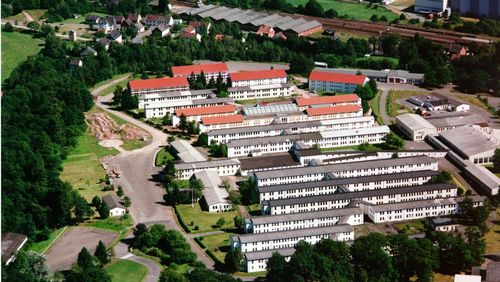
In 1993, the state of Rhineland-Palatinate made the forward-looking decision to establish the Environmental Campus in Birkenfeld/Neubrücke as the new location for the Trier University of Applied Sciences.
Until 1992, the property of the Environmental Campus had served as the site of a reserve hospital for the American armed forces in Germany. The campus model is based on the "residential campus" familiar from American universities, which combines living, learning and working in one place.
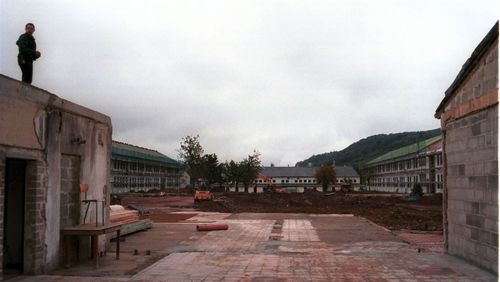
In 1994, renovation work began, gradually creating modern seminar rooms, lecture halls, laboratories and a comprehensive infrastructure. As a "Zero Emission University", the Umwelt-Campus has pursued an uncompromisingly ecological building concept with CO2-neutral energy and heat supply as well as state-of-the-art building and systems technology from the very beginning. During the conversion into an education and research location, mainly ecological and sustainable building materials were used.
The concept of the Environmental Campus Birkenfeld provides for an interdisciplinary education under the framework aspect of the material cycle in the sense of sustainable development.
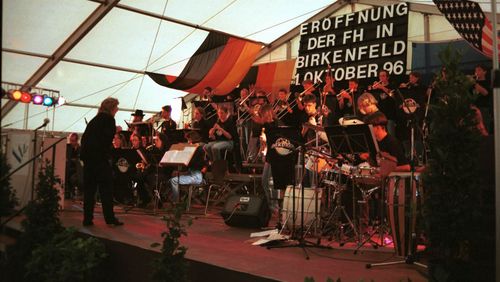
Success was not long in coming: instead of the expected 175 students, more than 550 students stormed the campus when it opened in 1996. The founding professors Prof. Dr. Eulenstein, Prof. Dr. Köhler and Prof. Dr. Bronder rightly believed that the campus would soon become something "special". In 1996, five diploma programs were offered.
One special feature of the campus became established very early on: the so-called "Flying Days". These introductory events for first-year students are still held regularly today and contribute significantly to a flying start to studies.
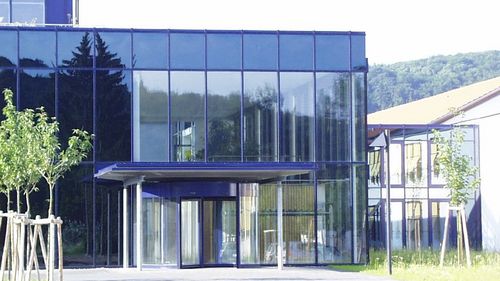
In 1998, the next construction phase began with the construction of the new Central Building, which was handed over in 2001 as the Central New Building and still bears this designation today.
In the first years, rubber boots were part of the standard equipment at the Umwelt-Campus due to the various renovation works. The facilities outside the inner UAS area were managed by the Umwelt-Campus Birkenfeld Entwicklungs- und Management GmbH (UCB GmbH) and were available for the accommodation and supply of students and lecturers but also for professional and scientific further education.
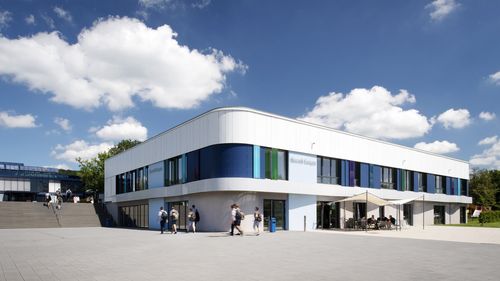
From the very beginning, it is clear that communication is our strength. And we are constantly expanding it. Opened in 2012, the Communications Building provides generous space for a campus cinema and countless events - in other words, for everything our students can think of to have fun.
It is a passive house that is characterized by appropriate insulation of the building envelope surfaces in conjunction with highly efficient building technology. In addition, a photovoltaic system installed on the roof supplies the building with electricity.
The building concept fits seamlessly into the existing structure of the campus grounds. On the one hand, it is part of the entrance axis of the central new building, which houses the majority of the lecture rooms and the library. On the other hand, it is also a link between the "learning, working and living" areas on the campus.
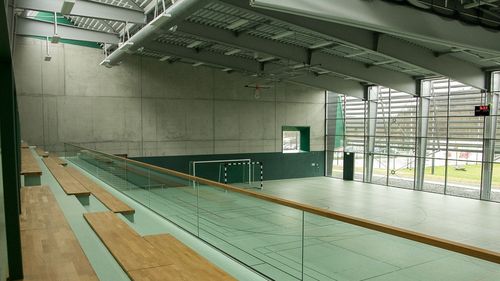
The newest building is the sports hall with a usable area of approx. 1,480m2, which was inaugurated in January 2015. Equipped with the latest technology, the branch hall is 50 meters long and 35 meters wide. The building has a photovoltaic system. Likewise, rainwater, gray water and yellow water can be separated and put to further use. The intermittent room ventilation system installed in the hall also makes a valuable contribution to increasing energy efficiency.
The state-of-the-art air-conditioning technology additionally serves the university for study purposes.
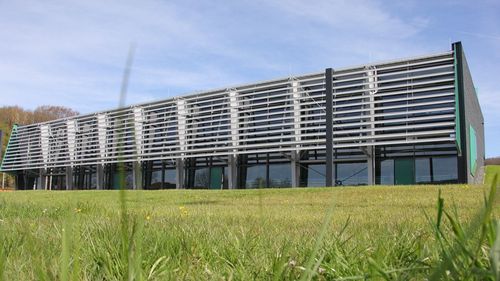
After some delays, the gym at the environmental campus opened for business in late 2016 and was quickly filled to capacity by sports clubs from the surrounding area and university sports groups. Everything from soccer, dodgeball and breakdancing to kung fu, fencing, basketball and cheerleading are represented.
The first level houses the 1228-square-foot athletic field, which can be separated into two halves, with locker rooms and equipment storage. The second level includes the auditorium with bleachers for over 250 people.
The bambinis of SC Birkenfeld were the first to use the hall.
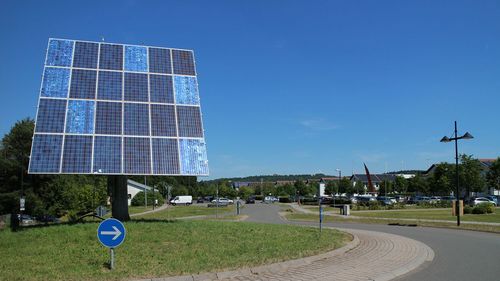
The idea of establishing a sports center at the environmental campus was born 20 years ago. The former community leader of Hoppstädten-Weiersbach Arnold Meiborg was instrumental in the now finally successful implementation. In 2018, the new sports hall was therefore named "Arnold Meiborg Halle".
The former district administrator Ernst Theilen also made great contributions to the transformation of the former US military hospital into a modern university. To honor them as well, the square at the traffic circle within sight of the central new building was named after Ernst Theilen.
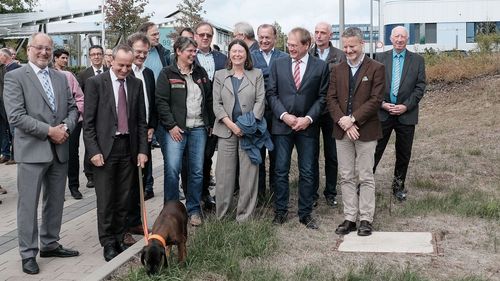
In 2018, the official cooperation agreement between UCB and the Hunsrück-Hochwald National Park was signed. This created a formal framework to express and further promote cooperation.
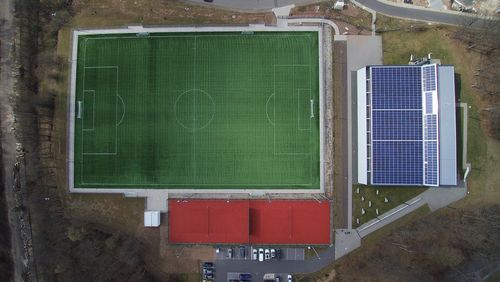
In March 2019, the soccer field at the sports center was completed and the tennis facility was upgraded.
The developer of this overall project was the UCB project development association, which includes the municipality of Birkenfeld and the municipality of Hoppstädten-Weiersbach.
Like the sports hall, the soccer field, which is equipped with an LED floodlight system and can thus also be used in the dark, is available to clubs from the Birkenfeld municipality as a training and playing facility.
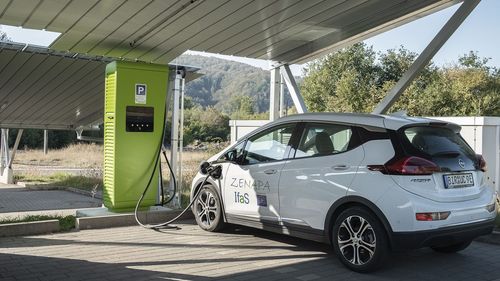
Available for use by all residents, entrepreneurs and guests since June 2020: the e-mobile charging stations at the UCB and Neubrücke train station.
After an internal test phase, the "NEMo" (zero-emissions mobility center) project was released to the public for use. An initiative of the Institute for Applied Material Flow Management (IfaS) in cooperation with the AöR "Erneuerbare Energien für Birkenfeld" (AöR eEfB) of the VG Birkenfeld resulted in a project that will not only generate electricity in an environmentally friendly way, but will also offer flexible and sustainable mobility services in rural areas by creating an intelligent infrastructure.
The "NEMo" is located directly in front of the communication building at the environmental campus and consists of three solar carport rows with a total output of 96 kWp. Another charging station with two charging points is located at the Neubrücke train station under a solar carport.

In the renowned GreenMetric ranking, the environmental campus has shone for four years as the "greenest university in Germany" and is ranked 6th worldwide out of 912 participating universities. Sustainability, internationality and applied research are writ large at Birkenfeld.
In its anniversary year, the Environmental Campus has ten institutes and was able to attract more than 18 million euros in third-party funding in the research priorities "Applied Material Flow Management" and "Technologies for Sustainable Development" in 2019 and 2020 alone, which will create numerous, highly qualified jobs in the region.
You are leaving the official website of Trier University of Applied Sciences